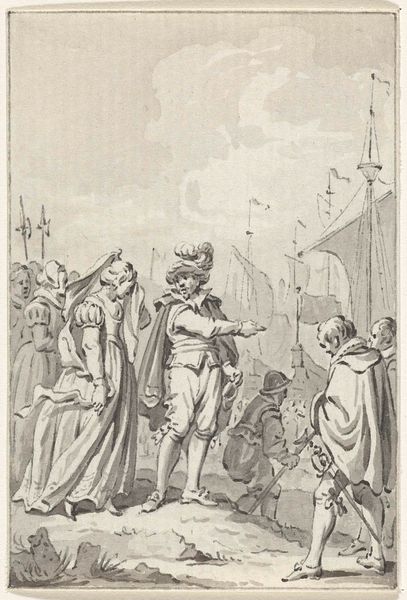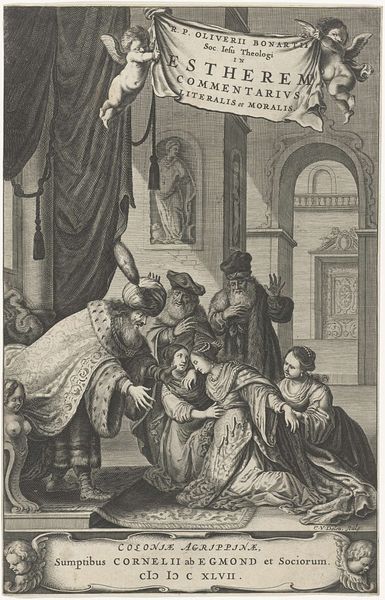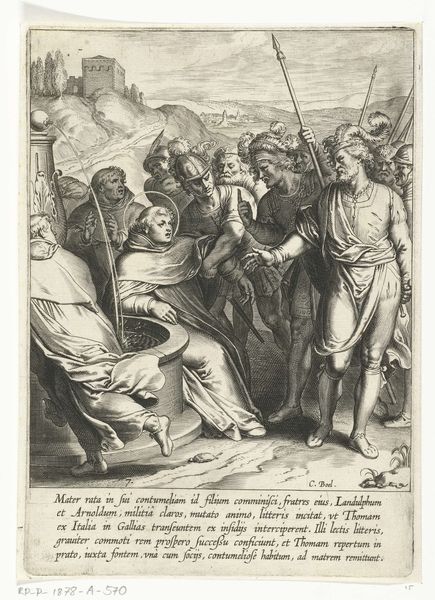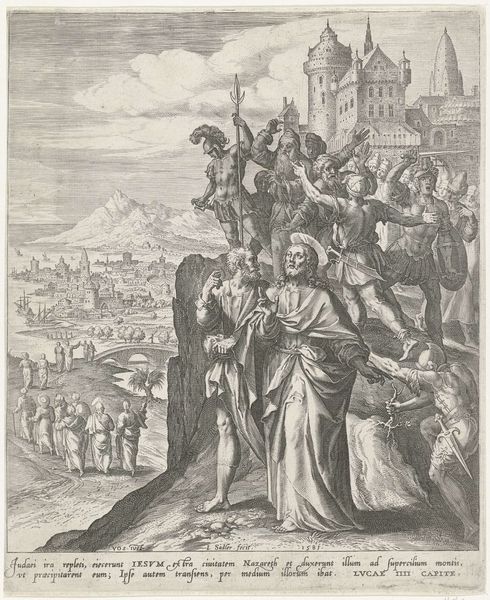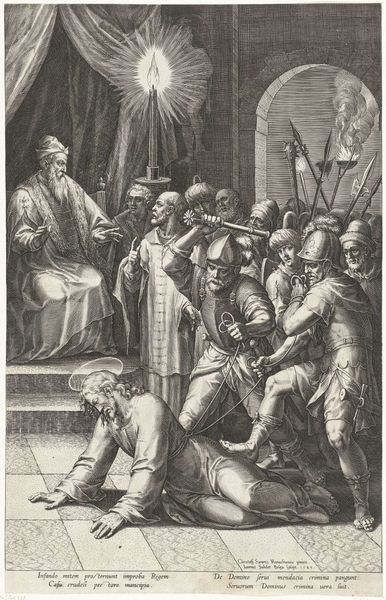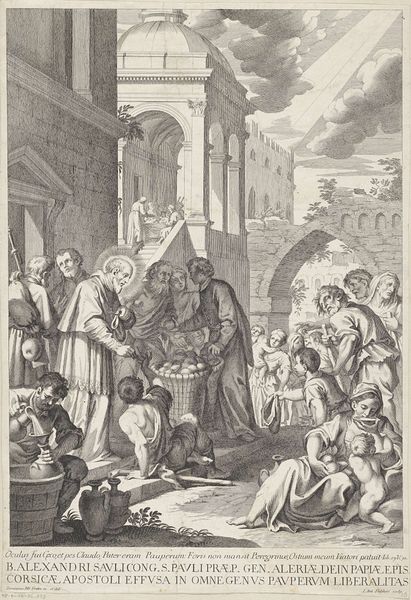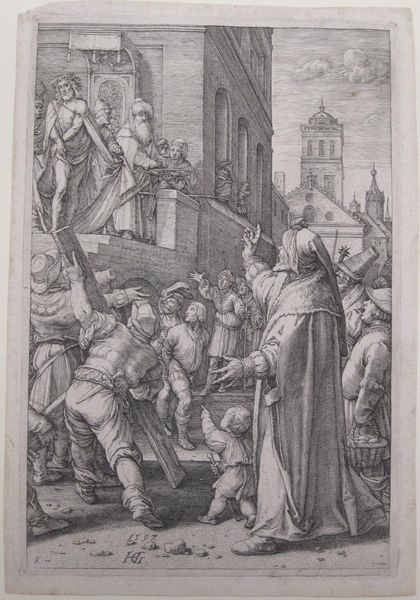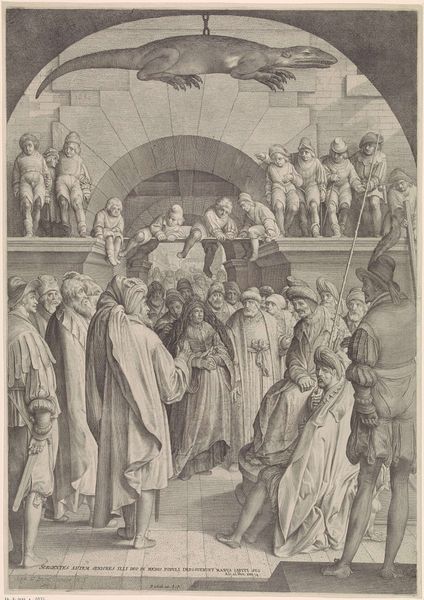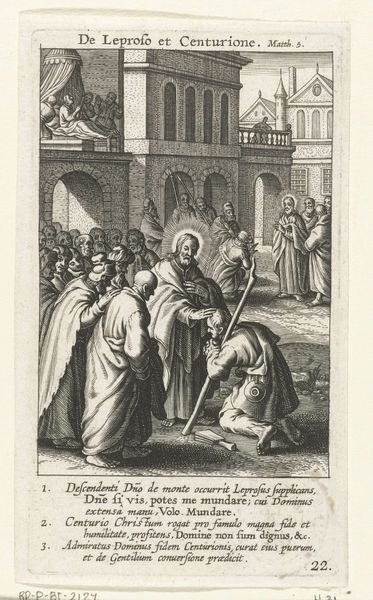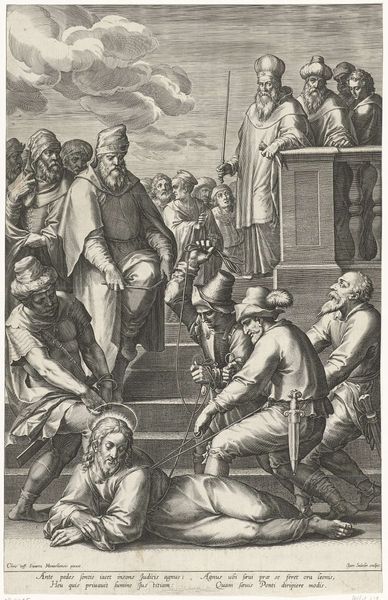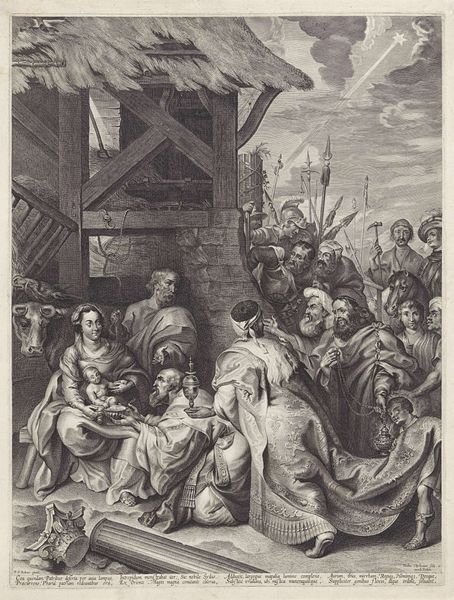
Dimensions: 31.7 x 24.6 cm (12 1/2 x 9 11/16 in.)
Copyright: CC0 1.0
Editor: This is Jacques Callot's "Ecce Homo," a 17th-century engraving. The scene is incredibly detailed, with a palpable sense of tension in the crowd. What strikes you most about this piece? Curator: Beyond the immediate religious narrative, I see a potent commentary on power and the spectacle of injustice. Consider how Callot frames the crowd's complicity, their baying for blood mirroring societal structures that perpetuate oppression. Where does individual responsibility lie within collective action? Editor: That's a powerful point. It makes you think about contemporary issues like mob mentality online. Curator: Precisely. The historical context informs our present. By examining how Callot depicted these power dynamics, we can gain a deeper understanding of our own roles within societal systems. Is justice truly blind, or is it selectively applied? Editor: I never thought about it like that before. Thanks for sharing. Curator: Likewise. It is important for us to see art as a lens through which we examine power, complicity, and social justice.
Comments
No comments
Be the first to comment and join the conversation on the ultimate creative platform.
